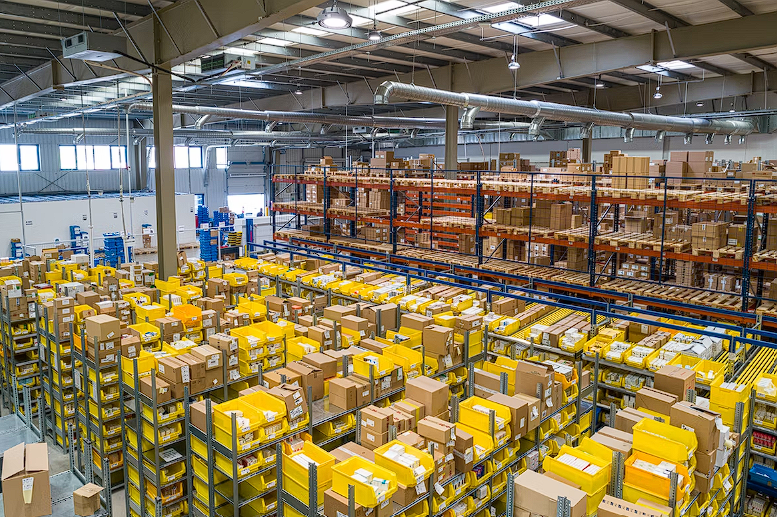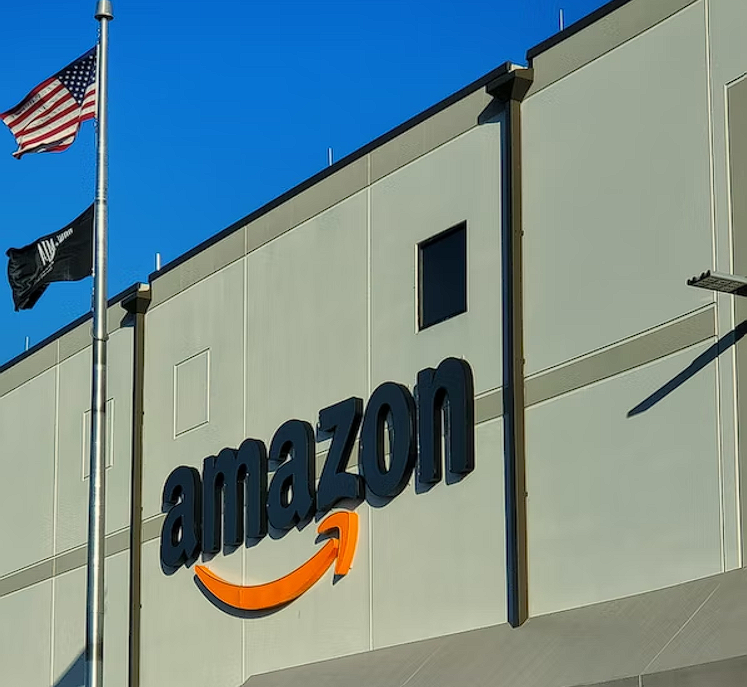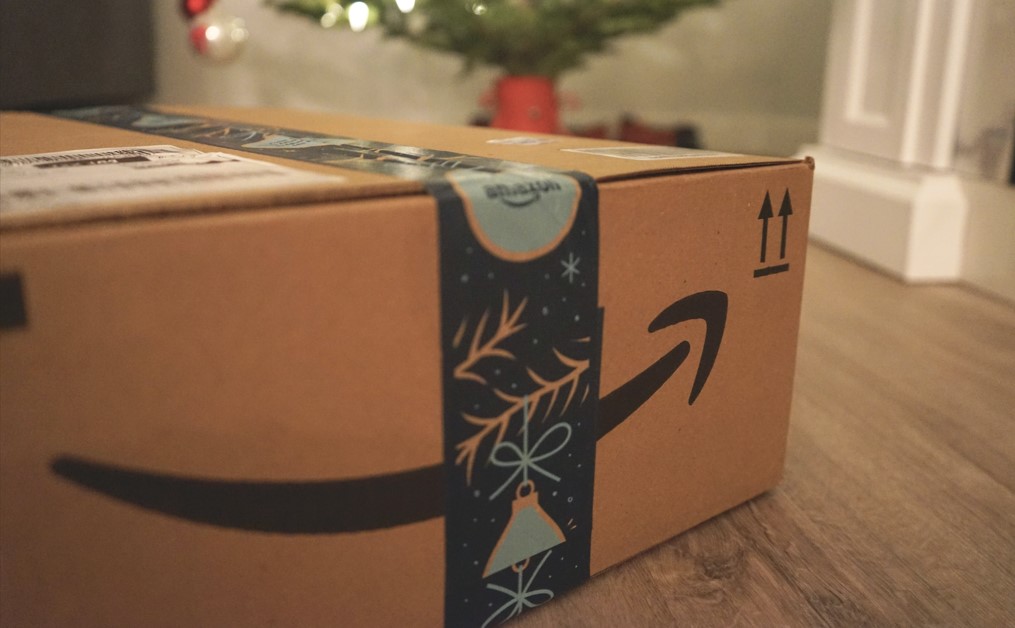
Are you looking to start or grow your Amazon business? Consider wholesaling on Amazon.
Amazon wholesale is the process of buying products in bulk to resell on Amazon for a higher price.
Buying products in large (cheaper) quantities and then selling them individually can be a very lucrative opportunity for sellers. Selling wholesale means you’re the provider of these bulk products.
How do you become an Amazon wholesaler? Choose the right products, understand the market, and optimize your listings.
Ready for more details? Keep reading.
Table of Contents
What Does it Mean to Sell Wholesale on Amazon?
Selling wholesale on Amazon is the process of purchasing bulk branded products from another manufacturer, supplier, or distributor and then reselling these to consumers for a profit.
If you’re already selling through Amazon, you’re already sourcing your inventory from somewhere. So why not source it in bulk–and then sell it in bulk?
Not only does this guarantee you have the inventory you need in stock, but it also gives you immediate access to sizable revenue.
Standard Selling vs Bulk Selling
Standard selling is a common business model for companies selling on Amazon. Rather than buying in bulk, standard selling means buying from a manufacturer or creating an item yourself, then selling items individually in your Amazon store.
Every time someone purchases your item, they pay the set cost and shipping price. This model is a good option for businesses with fewer items to sell. However, making the shift from standard to bulk selling is not as big as it seems.
Bulk selling means buying more at once–which can be a bigger financial risk for some businesses. But, purchasing in bulk often means buying at a discount, adding even more income to your bottom line. However, if you’re looking to create your own brand, this option may not work for you since you’ll need to buy from existing brands.
Wholesale vs Arbitrage
Arbitrage is the practice of taking advantage of multiple markets by purchasing items at a low price from one outlet and selling it for a higher price at another.
With wholesale, sellers buy bulk products directly from the brand–not from other stores selling this brand. And, they usually sell in bulk as well. Wholesalers often have relationships with the providers in order to receive discounted items.
Wholesale vs Private Label
Private label refers to products a manufacturer creates and sells to other companies to brand, market, and sell under their own label.
When working as a wholesaler, you purchase strictly from existing brands. Wholesaling is more about the items you curate and collect rather than create.
Advantages exist for both private label and wholesale, but using wholesale means spending less time building a brand and more about increasing your sales. This way, you can cut right to revenue building with items that already have loyal customers and verified reviews.
Wholesale vs Dropshipping
Dropshipping allows a seller to find products from a manufacturer and list them on Amazon. The seller won’t purchase the item from the manufacturer until a customer buys it from the seller’s store.
This is a very different strategy from wholesale and usually works best for smaller businesses that want to take a smaller financial risk.
Wholesalers are effectively the suppliers of their products, so dropshipping is not an option since they already have their inventory in stock.
Wholesale vs FBA
Being a wholesaler does not mean you must use Fulfillment by Amazon (FBA) but it can make the process easier.
FBA allows you to purchase your inventory and store it in Amazon Fulfillment Centers. Amazon completes the entire fulfillment process from storing, packing, and shipping your items when you make a sale.
As a wholesaler, keeping your bulk items and completing orders may become time-consuming, so using FBA can improve efficiency. However, if your items are not selling and are sitting on the shelves, finding a different third-party service with lower costs might be a better option.
How to Sell Wholesale Products on Amazon

1. Create a Seller Account
Start by setting up your Amazon Selling account in Amazon’s Seller Central. This is where you will monitor all of your sales activity and listings. Once you set up your account, you will start adding products.
2. Open an Amazon Store
By investing some time into creating an Amazon Store, you are offering customers an opportunity for a more immersive shopping experience.
You can create a storefront that reflects the overall goal of your products and provide suggestions for complementary products, making it easier for customers to return to your products again and again.
3. Provide Business Information
Add your business information so Amazon and your customers know who you are. Even though you are selling existing brands, it’s still essential you’re a trusted entity.
4. Choose Your Products
Find products that you wish to add to your Amazon Store. In this case, you’ll want high-demand products to buy in bulk and resell. In wholesale, there’s no need to brand these items or build out their listings as you purchase from existing brands.
5. Find a Supplier (If Needed)
Once you have identified which items you want to sell, you can start the search for a supplier. You can start by simply Googling “product + wholesale” and seeing if any reputable sellers come up.
It’s critical to do your research here to ensure the product you’re purchasing is one of value. Spending extra time on this step could pay off significantly down the road.
6. Optimize Your Listings
Amazon listing optimization is a multi-faceted process of using proven tactics to achieve higher rankings for your Amazon products.
Optimization includes:
- Adding the right keywords in your description, title, and bullets
- Beautiful product images (and even videos)
- Lots of good reviews
- Add backend search terms
The process of optimizing an Amazon listing can take time. Utilizing a quality software solution is the best way to simplify the process.
Why spend hours on keyword research or thousands of dollars hiring more staff when optimization platforms like Sellesta.ai can take care of keyword research, listing optimizations, and competitor research all at once?
You won’t only benefit from time savings, though. You’ll experience laser-sharp accuracy with our top-of-the-line artificial intelligence: no more mismatched keywords or irrelevant data. Our tool studies your market, competitors, and listings to provide the most relevant insights.
Try our industry-leading features, including:
- Listing scoring: Get optimization checklists that provide insights on the main aspects of your listing: product title, product description, review count, and more.
- Keyword search integrated with listing optimization: Maximize organic traffic to your listing by finding the most important keywords to include.
- Listing optimization: Use our AI-driven listing optimization to improve your listing title, bullets, and generic keywords. The AI can generate these elements for you, making optimization quick and easy.
- Competitive analysis: Automatically identify your direct and indirect competitors and track their BSR, prices, ranking, and listing optimization score – all in real time.
- Review analysis: Our AI analyzes key tags and the emotional tone of key tags to break down what customers really think about your (and your competitors’) products. You can see where customers are having issues with your product and make the necessary changes. And, you gain insights into why customers love or don’t love a competitor’s product, and how to adjust yours accordingly. Make your product listing stand out by addressing these concerns and emphasizing exactly what you know customers look for in this type of product.
7. Manage Your Inventory
Whether you manage your inventory independently or use FBA, this is crucial to getting your products where they need to go. Since wholesalers buy in bulk, they often have a more extensive inventory than smaller businesses selling on Amazon.
If you’re using FBA, Amazon will handle storing, packaging, and shipping your items, as well as customer service and returns.
Pros and Cons of Selling Wholesale

The Benefits
Selling wholesale on Amazon has some great advantages.
- It’s fast and easy to get started. The hardest part of your wholesale setup is communicating with suppliers to get your stock. Negotiating fair prices and quantities can take time. But once it’s done, the hard part is essentially over. It’s possible to have your items listed, optimized, and ready for purchase within six weeks. That’s less than two months! The ease of this model allows for a faster turnaround in revenue.
- You’re selling already branded items. Branding and vetting products can take a lot of time–and this is a step you get to skip as a wholesaler. You’re picking from products that valued customers have already branded and reviewed. When researching what to sell, you can choose products with good reviews and high ratings. You have access to ample research on how a product has sold over time, which is hugely advantageous as a seller!
- Buy, sell, repeat. One of the huge advantages of being a wholesaler? Building relationships with your customers to earn repeat business. You don’t have to worry as much about marketing in order to drum up new customers. You can sell to your existing customers by offering a great customer experience. Also, repeating the process and scaling the business can be seamless.
The Limitations
There are some important things to be aware of when selling wholesale.
- You need more to get started. You need more cash up front, which could pose a financial risk for some businesses.
- There’s competition. Amazon wholesale competition can be intense–so instant revenue is not always guaranteed. Multiple sellers will always compete, and because of the nature of the bulk products, you have less opportunity to use branding to gain customers.
- Choose a great product. Picking a poor product is another risk. When buying in bulk, you need to be certain these Amazon products will start to do well or already are. This means predicting market trends. When done correctly this means you can be ahead of a revenue-explosive trend. However, you could also predict wrong and potentially lose quite a bit.
Boost Your Sales on Amazon
The wholesale strategy can be lucrative for selling products and building your business. To increase your chances of success, use Sellesta.ai to optimize your listings.
As a powerful multi-tool, you’ll be able to analyze your competitors, integrate essential keywords, and generate content in one click with their AI-powered platform.


